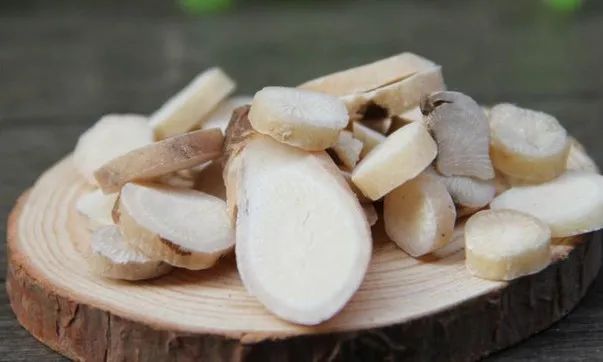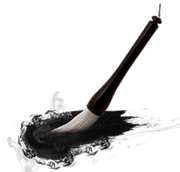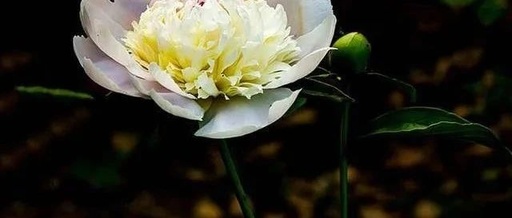Bai Shao (White Peony)
Sheng Ma (Cimicifuga)

1
Bai Shao was first recorded in the Shen Nong Ben Cao Jing (Shen Nong’s Classic of Materia Medica), classified as a superior herb, originally named Shaoyao (Peony). It is indicated for dizziness, chest and abdominal pain, limb spasms, diarrhea with abdominal pain, persistent sweating, and irregular menstruation, making it an excellent remedy for gynecological disorders.
Bai Shao not only has the aforementioned effects but is also widely used clinically for its diuretic properties, as noted in Yi Xue Zhong Zhong Can Xi Lu by Zhang Xi-chun, and I have also applied it in clinical practice.
It has also been used extensively for hemostatic purposes, as demonstrated by many senior TCM practitioners like Yue Mei-zhong.
However, I believe that the primary function of Bai Shao is still reflected in its ability to relieve spasms and pain.
To use this herb effectively, one must pay attention to one crucial point: the dosage must be large. For relieving spasms and pain, I generally use 50-120g; below this amount, the effect is not significant.
Furthermore, the indications are best suited for smooth muscle spasms, such as in cases of bronchial cough and asthma, gastric pain, and dysmenorrhea; other types of neuropathic pain are not as effective.
In clinical practice, it is common to see some practitioners using this herb incorrectly, either by using only 10g or 8g, which yields no effect; or by using it indiscriminately, claiming it can relieve all types of pain without distinguishing the nature of the pain, resulting in inconsistent effectiveness.
2
Regarding dosage, the Shang Han Lun (Treatise on Cold Damage) mentions that in the Shaoyao Gan Cao Tang (Peony and Licorice Decoction), each ingredient is four taels, which translates to 60g. In the Dang Gui Shao Yao San (Tangkwei and Peony Powder), Bai Shao is directly listed as one jin, equivalent to 250g, indicating that the absolute amount cannot be less.
Modern practitioners like Zhang Xi-chun use 180g for diuresis, and Wan You-sheng uses 90g of Bai Shao for treating lower limb fire, achieving remarkable results, all of which highlight the importance of dosage.
Below are two case examples:
Case 1
Abdominal Pain
Wang, female, 37 years old. A worker from Sichuan in Shaanxi. She presented with right upper abdominal pain, loss of appetite, and cold sweats, seeking treatment from me with TCM.
Diagnosis: Acute pain with a distressed appearance, holding her abdomen, moaning continuously, pale tongue with thick white coating, tight and wiry pulse, and slightly loose stools for over a month.
I diagnosed her with cholecystitis or gallstones (later confirmed by ultrasound as acute cholecystitis).
Prescription: Da Chai Hu Tang (Major Bupleurum Decoction) modified
Chai Hu 60g, Huang Qin 15g, Zhi Shi 15g, Ban Xia 30g, Dang Shen 50g, Bai Shao 30g, Da Huang 15g, Gan Jiang 10g, Cang Zhu 12g, Sheng Gan Cao 30g, Sheng Jiang 6 slices, Yu Jin 12g, Yuan Hu 30g, Chuan Jiao Zi 10g
5 doses, decocted in water, taken three times a day.
After a week, she returned for a follow-up, with slight relief of pain but still experiencing bloating and loose stools, with poor appetite. The tongue coating was slightly thinner, and the pulse was no longer tight. The effect was not significant, and the patient urgently requested a solution for her bloating and pain;
After much consideration, I believed the prescription was too light for her condition, so I increased Bai Shao to 90g and Gan Jiang to 30g in the original formula, and she took five more doses;
On the third follow-up, the patient reported that after taking two doses, the pain in her abdomen had disappeared, but she still felt some bloating and had poor appetite. I changed the formula to Yi Gong San combined with Si Ni San for follow-up treatment, and she recovered.
Case 2
Dysmenorrhea
Qin, female, 27 years old. She had suffered from dysmenorrhea for many years and was referred to me for TCM treatment.
Diagnosis: A medium-built individual, pale and plump, delicate in appearance. Pale tongue, thin white coating, thin and wiry pulse, experiencing excruciating pain during menstruation, dark menstrual blood, moderate flow, and regular cycle.
Her diet and bowel movements were normal, but due to personal issues, she was feeling depressed and irritable. She had seen multiple TCM practitioners with unsatisfactory results, leading to a lack of confidence.
Prescription: Dang Gui Shao Yao San combined with Gui Zhi Fu Ling Wan and Shi Xiao San, adjusted.
Dang Gui 15g, Bai Shao 60g, Chuan Xiong 12g, Gui Zhi 15g, Dan Pi 12g, Tao Ren 12g, Fu Ling 30g, Wu Ling Zhi 15g (in a bag), Sheng Pu Huang 15g (in a bag), Ji Xue Teng 30g, Bai Zhu 10g, Ze Xie 30g, Gan Cao 10g.
Seven doses, decocted in water.
Administration: Start taking about a week before menstruation until it stops during menstruation, for three consecutive months.
After taking the medicine, she experienced mild pain during her first menstruation, which was much better than before, and the patient was very pleased. During the second menstruation, there was no pain, and the third menstruation also had no pain, leading to a complete recovery. Afterward, she took the above herbs in pill form for three months for a thorough cure.

Ancient Path Thin Horse Comment:
In Case 1, the diagnosis was accurate, but the dosage was insufficient, causing the patient to suffer for another week. I felt quite ashamed; my prescribing was not precise, and my medical skills were lacking. Fortunately, I realized my mistake and quickly corrected it, allowing the patient to gradually find relief and ultimately recover.
It truly is a lesson learned; in the future, as long as the diagnosis is correct, I will boldly use the herbs, achieving rapid results, as demonstrated in Case 2.
In addition to the dosage issue, I want to emphasize that Bai Shao is particularly effective for pain caused by smooth muscle spasms, and I encourage others to explore this further; this is merely my personal opinion.
THE END


